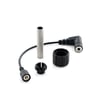Evolution and Advancements in Tattoo Machines: Embracing Wireless Technology
The art of tattooing has undergone a significant transformation over the years, not only in designs and techniques but also in the tools used. Among these tools, the tattoo machine stands as an essential instrument for tattoo artists worldwide. With technological advancements, the introduction of wireless tattoo machines has revolutionized the industry, offering newfound freedom and versatility.
A Brief History of Tattoo Machines
Tattooing, an ancient form of body art, initially relied on manual methods. The invention of the first electric tattoo machine by Samuel O’Reilly in the late 19th century marked a pivotal moment, streamlining the tattooing process and increasing efficiency. Over time, these machines evolved in design, structure, and functionality, paving the way for modern tattoo devices.
Understanding Traditional Tattoo Machines
Traditional tattoo machines, also known as coil tattoo machines, operate using electromagnetic coils and springs to move needles up and down. These devices have been the primary choice for many artists due to their reliability, precision, and ability to create intricate designs. However, they come with the limitation of being tethered to power sources via cords.
The Emergence of Wireless Tattoo Machines
Wireless tattoo machine represent a groundbreaking leap in tattoo technology, offering artists unparalleled freedom of movement and convenience. These devices are powered by rechargeable batteries, eliminating the need for cords and enabling artists to work more flexibly. The transition from traditional to wireless machines has been embraced by many artists seeking greater maneuverability and efficiency.
Advantages of Wireless Tattoo Machines
Mobility and Flexibility: Wireless tattoo machines allow artists to work without being restricted by power cords, enabling them to create tattoos with greater ease and precision.
Enhanced Control: The ergonomic design and lightweight nature of wireless machines provide artists with improved control and maneuverability, resulting in finer details and smoother lines.
Versatility: With varying speed and needle configurations, wireless machines cater to different tattooing styles, accommodating the diverse needs of artists and clients.
Considerations for Choosing a Wireless Tattoo Machine
Battery Life: Assessing the battery life of a wireless tattoo machine is crucial to ensure uninterrupted tattooing sessions.
Performance and Durability: Opting for machines known for their reliability, consistent performance, and durable build is essential for long-term use.
Compatibility and Features: Understanding the compatibility with different needle types, adjustable settings, and additional features aids artists in selecting the most suitable wireless machine for their work.
Future Trends and Innovations in Wireless Tattoo Machines
As technology continues to advance, the future of wireless tattoo machines appears promising. Innovations such as smart connectivity, precision controls, and extended battery life are anticipated, further enhancing the capabilities and efficiency of these devices.
Conclusion:
The evolution of tattoo machines, particularly the advent of wireless technology, has significantly impacted the tattooing industry, empowering artists with newfound freedom and efficiency. As these machines continue to evolve, embracing innovation while maintaining quality craftsmanship remains pivotal in meeting the demands of both artists and tattoo enthusiasts.

Recent Post
What is The Meaning of a Medusa Tattoo?
January 9, 2025
The Meaning of Encanto in Spanish and Origin
January 4, 2025
Equivalent Phrases For “Including But Not Limited To”
December 30, 2024
How To Make Weekend Greetings More Fun?
December 30, 2024
10 Modern Sayings Similar To “Be There Or Be Square”
December 30, 2024








